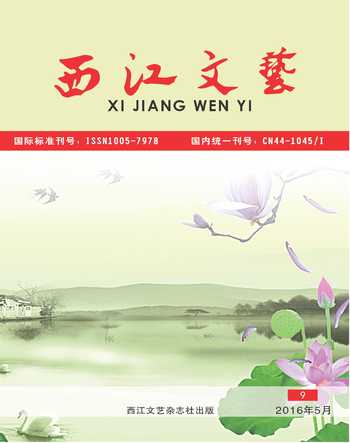A Comparative Study on the Implementation of Alienation in Three English Versions of The Analects
龚玮嵘 陆丹岚
The Analects is a masterpiece of Confucius. It plays the role of a corner stone for Chinese culture. The translation and introduction of The Analects serve not only as a window for foreigners to have a glimpse of Chinese culture but also as a mirror reflecting our own understanding of the essence of traditional culture. This paper attempts to deepen our understanding of translating and introducing The Analects through comparative study on three versions of The Analects from the perspective of alienation.
Key words:comparative study; the Analects; alienation
1. Introduction of the Analects
Recording the acts and words of Confucius and his disciples, the Analects, as a work of quotation in prose style, is one of Confucian masterpieces. Its content with succinct words covers almost everything under the sun and imposes great influence upon the shaping of traditional Chinese culture and society. Today, history witnesses the turning of a new page for an emerging China. The urgency for introducing Chinese culture has been unprecedented.
2. Of the three English versions
The three English versions discussed in this paper are the works of James Legge's, Arthur Waley's, and Roger T. Ames's.
Legge's version is published in HK in 1861. Though as a priest he is more or less religiously motivated, his translation on the whole is objective and trustworthy, which mostly attributes to his adoption of literal translation and preservation of original sentence patterns. As for the style, he takes advantage of the writing style of the 19th century to convey the sense of antique and authority of the source text.
Waley's translation is first published in London in 1938 and republished in 1956. As a sinologist and well-known translator of literary works, Waley endeavors to have his work done in modern English with an easy style, which stands sharp contrast against that of Legge 's.
Ames is devoted to keeping the subjectivity, morality, and sense of beauty of the original work and faithfully conveys them to his target readers. He is strongly against replacing them with western teleology, dualism, and transcendentalism.
3.Comparative Study on the application of alienation strategy in translation
3.1 The application of alienation in Legge's works
Legge's work is featured with word for word translation. He strives to preserve not only the words but also the sentence patterns, not only the spirit but also the style. Fluency to him is of second consideration. In this aspect, his style and Luxun's are much alike. Lets take a look at the following examples.
a)the preservation of the original sentence patterns
● 吾尝终日不食,终夜不寝,以思…
Legge's translation:I have been the whole day without eating, and the whole night without sleeping, occupied with thinking…
This is a case in point to illustrate that Legge is willing to preserve the original sentence patterns even at the cost of fluency. And by doing so, he leaves upon his readers a sense of alienation.
b)the preservation of the original figure of speech
● 岁寒,而知松柏之后凋也。
Legges translation:when the year becomes cold, then we know the pine and the cypress are the last to lose leaves.
Chinese people unlike the westerners, who read the world through deduction and induction, tend to have their understanding of the world based upon direct observation of it. This mindset is displayed by Legge to his target readers through the preservation of the original figure of speech.
3.2 The application of alienation in Waley's works
Comparatively speaking, Waley's work is more reader-friendly. But the flip side is the style of his work deviates from that of the original one. To say he also adopts alienation in translation is to say his work is foreign to the original one.
● 今之孝者是谓能养,至于犬马,皆能有养,不敬,何以别乎?
Waleys translation:Filial sons are people who see to it that their parents get enough to eat. But even dogs and horses get cared for to that extent. If there is no feeling of respect, wherein lies the difference?
The translation is in plain words, easy to understand. However, it takes the translator twice as many words to convey the same meaning. Inevitably, the succinctness which is where the sense of antique and authority of the original text lies is lost. In a word, the translation is too wordy, owing to the fact that the translator adopts alienation in his translation.
3.3 The application of alienation in Ames' works
Ames views The Analects as a medium through which people in the east and west may have an intercourse and communication. He pays special attention to philosophical and cultural difference in the process of translating.
●子曰:非其鬼而祭之,馋也。
Waleys translation:sacrificing to ancestral spirits other than ones own is being unctuous.
In this example, Ames did not translate鬼into 'ghosts'. Instead he weighed this word carefully and put it down 'ancestral spirits'. In this way, his translation might look foreign to his target readers but remains faithful to the original one.
4.Conclusion
What the tree English versions of The Analects have in common is that they all adopt alienation in translation. But each does its work in a different sense. In the case of Legge's work, foreignness is achieved through his preservation of the original sentence patterns and even original words, while Waley's alienation betrayed the writing style of the source text, in the process of which he makes his work more readable yet fails to convey a taste of exotic favor of antique and authority. Ames's alienation lies in his preservation of the philosophical thinking and outlook upon the world in the source text. All three versions are masterpieces, yet each has its own merits and demerits.
Bibliography
[1] Waley, Arthur. The Analects[M]. Shanghai: Shanghai Froeign Education Press, 1998.
[2] 理雅各, 漢英四书[M]. 长沙:湖南出版社, 1996.
[3] 安乐哲, 论语的哲学诠释[M]. 北京:中国社会科学院出版社,2003.
[4] 王辉, 理雅各与中国经典. 中国翻译[J],2003(2):38.
——《四书释注》读后

